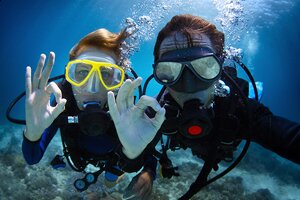- Magazine
- #readityourway
- Weekly Stories
- #shareyourstory
-
Adventure
- Abroad Travelling
- Africa Travelling
- Events
- Expos & Shows
- Festivals
- Fishing
- Free Diving
- Gliding
- Horse Riding
- Inspiring People
- Islands Travelling
- Kite/Windsurfing
- Motorbiking
- Motorised Water Sports
- Mountaineering
- Mountain Biking
- Off-road 4x4
- Off-road Motorbiking
- Paddling
- Performance Driving
- Photography
- Rock Climbing
- Rollerblading
- Sailing
- Scuba Diving
- Skateboarding
- Skydiving
- Snowboarding & Skiing
- Surfing
- Swimming
- Trail Running
- Wakeboarding
- Waveski Surfing
-
Sport
- Adventure Racing
- Fishing
- Free Diving
- Gliding
- Health & Fitness
- Horse Riding
- Inspiring People
- Kite/Windsurfing
- MMA
- Motorbiking
- Mountain Biking
- Multi-sport
- Off-road 4x4
- Off-road Motorbiking
- Paddling
- Performance Driving
- Photography
- Road Cycling
- Road Running
- Rock Climbing
- Rollerblading
- Sailing
- Scuba Diving
- Skateboarding
- Skydiving
- Snowboarding & Skiing
- Surfing
- Swimming
- Rugby
- Trail Running
- Triathlon
- Wakeboarding
- Waveski Surfing
- Lifestyle
- Calendar
BODY WORLDS and the Cycle of Life
Words: Cheryl Whelan │Source & Photos: BODY WORLDS
Category:
Expos & Shows
Category:
Health & Fitness
“Like no other museum experience in the world, BODY WORLDS changes the way we see ourselves.”
The BODY WORLDS Expo is currently showing at the Sci-Bono Discovery Centre, in the heart of Johannesburg’s Newtown district, and ends on 30 June 2013. This expo is an incredible eye-opening journey into the human body and its complexity, resilience and vulnerability. The specimens on display stem from an established body donation programme that has been administrated by the German Institute for Plastination since 1983. The programme has a roster of over 13,000 donors.
What to expect from the BODY WORLDS Expo
Dr. von Hagens took anatomy out of the clinical environment and transformed it through the scientific and aesthetic wonder of plastination (the science of preserving anatomical specimens) that he invented in 1977 to enable medical students to study the human body more deeply. Plastination is a technique that stops the decomposition of the dead body and produces solid, odourless and durable anatomical specimens for scientific and medical training.
The expo features a special presentation on the human life cycle and ageing - from prenatal development and infancy, to childhood and adolescence, youth, adulthood and old age. It shows the body living through time - at its most radiant, as it changes, grows, matures, peaks and finally wanes. It presents aging in the context of the human life cycle, as a natural progression from the spark of life at conception, to living with inspiration into later years. Other displays on view include:
A Heartbreaking Work of Staggering Genius is an insightful look at conception and ‘ageing’ during prenatal development. It features a multimedia display on cell division and a remarkable collection of plastinated embryos and fetuses from two weeks old to near full term, acquired from historical anatomical collections.
Smells Like Teen Spirit is a homage to the creativity of young people and looks at the developing teen brain from infancy and childhood, to adolescence, and the teen penchant for risk and originality that influences art, music, fashion and technology.
The Artists' Gaze is a striking display on sight and vision at birth and later in life, which presents computer simulations of the vision of impressionist painters Claude Monet and Edgar Degas, who both suffered from eye diseases - cataract and retinal eye disease. Using the scholarship of Stanford University Professor of Ophthalmology, Dr. Michael Marmor, the display sheds light on the challenges faced by Monet during the creation of his Giverney landscapes and Degas' visual problems that affected his Woman Drying Her Hair painting.
Centennial Village features findings on global geographic clusters of where the oldest living people live - from Okinawa, Japan and Ovodda in Sardinia, to the Hunza region of Pakistan. The people of these regions, who defy our understanding of what longevity means, have been found to share some common traits and lifestyle practices that we can all learn from.
The HIV/AIDS display by BODY WORLDS’ curator and physician Dr. Angelina Whalley incorporates additional information on the HIV/AIDS disease as part of the anatomical cabinet. Because of the disease’s pandemic proportion on the continent, Whalley wishes to stress the danger of infection during unprotected sexual intercourse.
This life-changing exhibition resonates with its visitors, regardless of age, education or culture, and this additional focus on HIV/AIDS is bound to strike a chord with many people in South Africa. It shows how HIV/AIDS sufferers can learn to live with the disease and lead more enriched lives as a result, significantly assisting in breaking down the continued stigma around this lifestyle disease. It is a must see for those who are HIV/AIDS positive, family members, action groups and educators working in this field and for youth on the verge of maturity.
Purpose of the exhibition
BODY WORLDS aims to educate the public about the inner workings of the human body and shows the effects of poor health, good health and lifestyle choices. It is also presented in the hope that it will stimulate curiosity about the science of anatomy and physiology.
If you have not yet visited the BODY WORLDS Expo, you have only until 30 June to do so. Tickets can be purchased on www.webtickets.co.za. •
Related content
|
|
|
|
|
|
|
|
|
|







